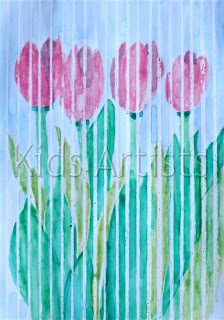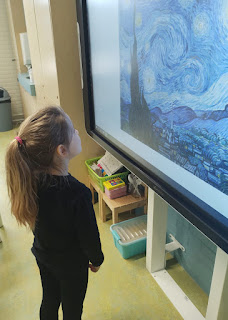by students of grade 6
You need:
- drawing sheet A3 size
- drawing sheet A4 size
- liquid water color
- brush
- oil pastel crayons
- scissors and glue
- ice cream sticks
- boxcutter
- cutting plate
- newspapers
- paper towels
Towards the end of the Golden Age, the Netherlands are at war with England, a battle that is being fought at sea.
In this lesson students draw a sea ship from that time.
Study paintings of ships in a battle. What stands out? How do you recognize the Dutch and English ships? Which flags do you see more? What do you see in the foreground of the first painting? What can you tell about the sails? How can you see those ships are in combat?
Naval battle Anglo-Dutch war(1666). Painter: Abraham Storck
Burning of a part of the English fleet (1667).
Painter: Pieter van de Velde
What should you do?
Step 1
First you paint the background on the largest sheet with liquid water color paint. At the bottom (near by) the water is dark, further away it becomes lighter (add water).
Step 2
Draw on the A4 sheet a VOC-ship with oil pastel and color it. Draw and color extra things which you also see in the water during a naval battle, such as fire,, aa life boat, an anchor etc. Do not forget tho color the sails white!
Step 3
Paint your drawing with blue water color paint. Wipe the excess paint off the white sails with a paper towel. Let dry.
Step 4
Cut out all parts, leaving a blue edge. Stick ice cream sticks behind the loose parts. Take the large blue painted sheet and decide where you want hour ship and the other things. Cut slices of about 3 cm in this sheet. Insert the sticks into the background and the artwork is done.
Source: Laatmaarleren.nl
.jpg)
.jpg)













.jpg)



































